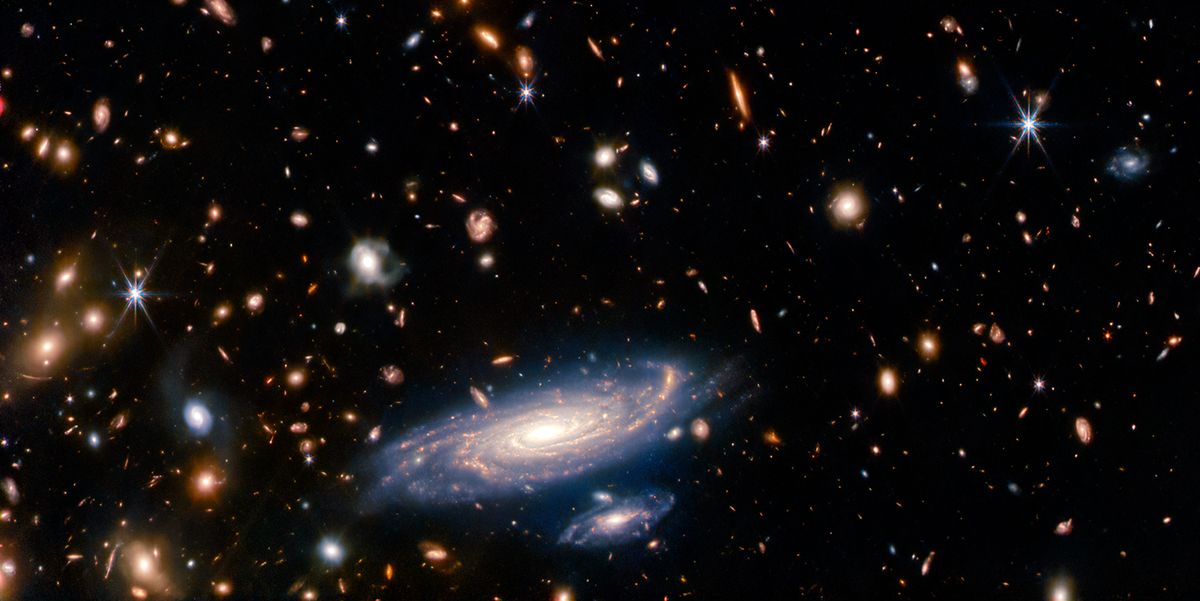Various universities and research institutes in the Netherlands and Belgium contributed measuring instruments for the James Webb Space Telescope. On the one hand, the European Space Agency commissioned the construction of the European Contribution to the Near-Infrared Spectrograph (NIRSpec), an instrument that monitors the spectra of more than a hundred stars simultaneously.
On the other hand, the Universities of Leuven and Leiden played a decisive role in the development of the Mid-Infrared Instrument (MIRI), a spectrograph that detects deeper infrared colors and opens up the cold environment of young stars and the farthest reaches of the universe. It is therefore not surprising that astronomers from the Low Countries were also involved in the major discoveries of Webb’s first year. We look at three powerful examples of Webb science from the Dutch and Belgian territories, within three important scientific pillars of space telescope: exoplanet atmospheres, star and planet formation, and the evolution of the early universe.
Dutch non-discovery
Universities here have already participated in Webb’s “First Light” campaign a year ago to detect carbon dioxide in the atmosphere of an exoplanet. This summer, another important discovery emerged: “non-discovery.”
The study was led by Sebastian Ziba, who is conducting doctoral research in Leiden and Heidelberg with Professor Laura Kreidberg. It was co-authored by Liège astronomer Michael Gillon, builder of the TRAPPIST telescope and discoverer of the TRAPPIST-1 system.
In 2017, Gillon discovered a system of seven planets orbiting a single star, three of which lie in the “habitable zone” (where the presence of liquid water is theoretically possible). Since then, we’ve had to wait for James Webb to determine whether there is life on Trappist planets – or at least the possibility of it.
Earlier this year, the nearly atmosphere-free Trappist-1b was destroyed. Zieba’s team focused on Trappist-1c and found no special atmosphere here either. This reduces the hope for habitability, but there are still three planets to go into the habitable zone in the famous planetary system. The “non-discovery” of Zieba cum Suis may seem like a disappointment, but it proves that James Webb is so powerful that we can rule out different scenarios and thus advance science.
Web and water
The early growth phase of the planets is also required. Belgian and Dutch researchers participated in the “Webb discoveries” of two important carbon compounds, benzene and methenium, in planetary disks. And in July 2023, the last straw came: a group of astronomers discovered water vapor in the interior of a disk of dust and gas around a young star.
Where water comes from on Earth is a major question in astronomy. A common hypothesis is that this was only achieved at a later stage by collisions of comets from the cold, icy outer regions of the solar system. This summer’s discovery shows that a lot of water vapor can actually be present in the inner parts of the disk, closer to Earth. This is special, because it was previously thought that water would instantly disintegrate into hydrogen and oxygen due to bright starlight.
A network of galaxies
The Low Countries are also making their voice heard in web-based research on the beginning of the universe. In February 2023, four publications were published on the deep field of the Pandora cluster of galaxies (similar to the image at the top of this article), with astronomers from Leiden and Groningen among the authors.
Pandora’s box has been opened…
You can read the full story about the space telescope in the latest issue of National Geographic:

“Thinker. Coffeeaholic. Award-winning gamer. Web trailblazer. Pop culture scholar. Beer guru. Food specialist.”







More Stories
Android 15, Sony, and more Gemini (Android News No. 20 2024)
Richard Gere sees the new film as a tribute to his deceased father RTL Street
Apple is introducing car motion signals in iOS 18 to prevent motion sickness